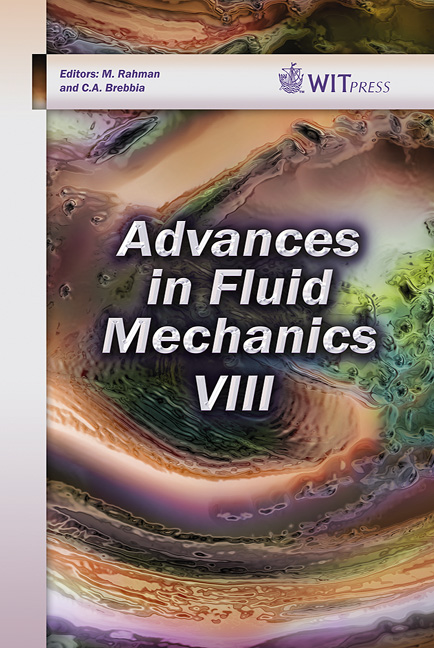Visualization Of Ultrasonic Cavitation In Visible And IR Spectra
Price
Free (open access)
Transaction
Volume
69
Pages
12
Page Range
451 - 462
Published
2010
Size
4259 kb
Paper DOI
10.2495/AFM100391
Copyright
WIT Press
Author(s)
A. Osterman, O. Coutier-Delgosha, M. Hocevar & B. Sirok
Abstract
Ultrasonic cavitation was generated with ultrasound of 33 kHz in a small closed water tank, containing about one liter of water. Cavitation was experimentally observed simultaneously with high-speed cameras in IR and visible spectra. Cameras were capturing images of the same observation area. From the images obtained time-dependent velocity fields were calculated for both cameras. Velocity calculation was based on pattern and similitude recognition between pairs of consecutive images. Images from the visible spectrum were also processed in order to detect the individual graphical objects presumably linked with cavitation collapses. As a result, correlations between velocity fields from each camera and correlations between velocity fields and cavitation collapses were determined. Strong correlations were found in all cases. Additionally, a delay was found for the velocities from the camera in the visible spectrum when compared to the thermographic results. Also the behavior of the correlation between cavitation collapses and velocities was in some cases found to be dependent on whether the velocities were from the images taken in the visible or the IR spectrum. Keywords: cavitation, ultrasound, IR thermography, velocity fields, correlation, bubble collapse, visualization. 1 Introduction Ultrasonic cavitation has many applications (Mason and Lorimer [1], Brennen [2]) and an obvious question that arises when one is dealing with it, is what is happening inside. In search for a non-trivial answer, an experimental approach to measure basic flow quantities seems appropriate, since currently available
Keywords
cavitation, ultrasound, IR thermography, velocity fields, correlation,bubble collapse, visualization





